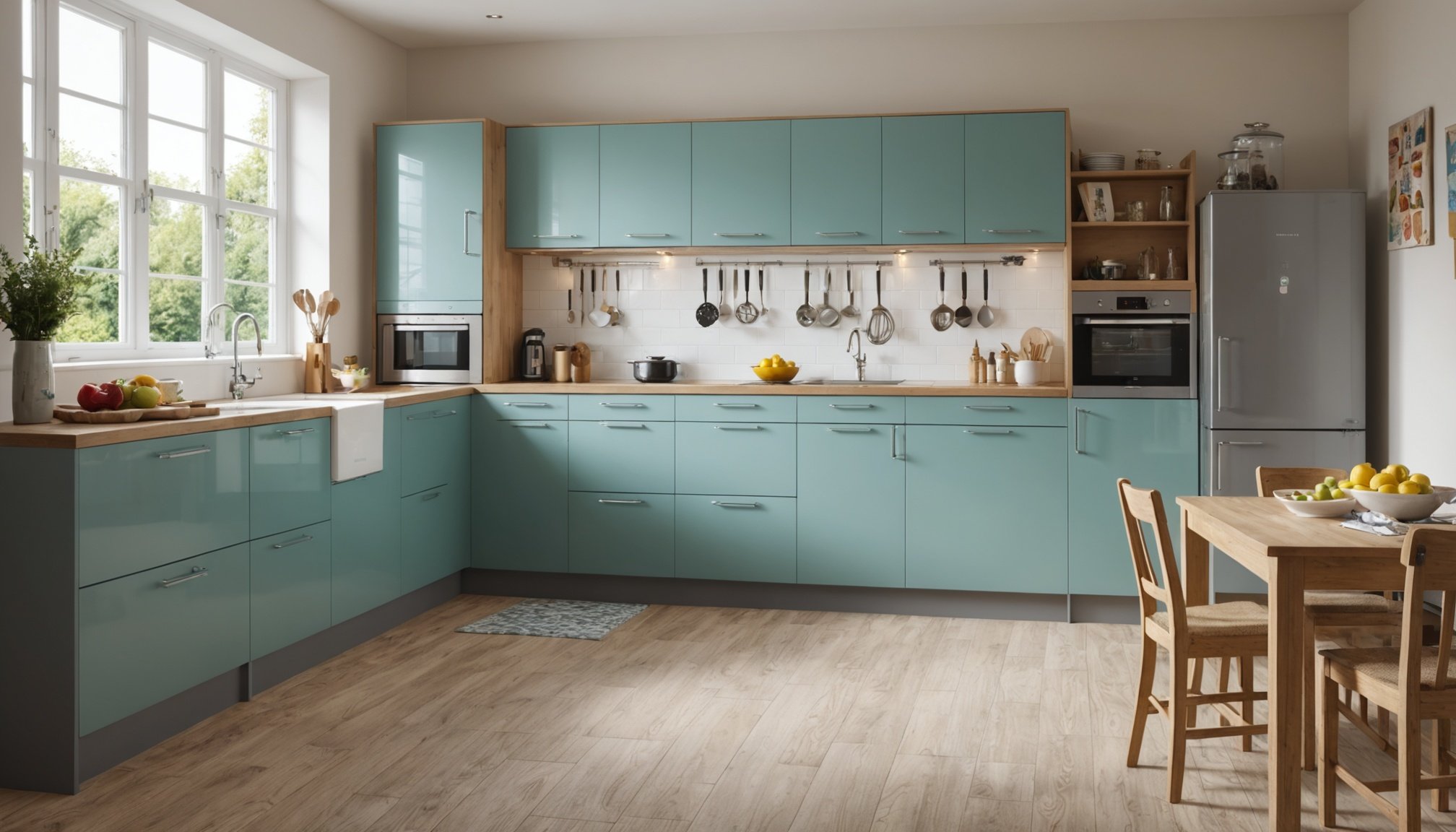Creating a kitchen that caters to the needs of every family member, including the youngest, can seem like a daunting task. Balancing safety, functionality, and aesthetic appeal is a challenge many UK homeowners face. But with the right focus on design, you can have a child-friendly kitchen that doesn’t sacrifice style. Let’s delve into how you can achieve this seamless blend of child safety and modern elegance.
Designing a Safe yet Stylish Kitchen
Bringing child safety and design together might feel like a compromise, but it’s entirely achievable with the right approach. Your kitchen can transform into a secure yet stylish haven for every family member.
Topic to read : How can I select the perfect backsplash to complement my UK kitchen style?
Innovative Layout and Space Utilization
The kitchen is often the heart of the home, and its layout plays a crucial role in ensuring both safety and aesthetics. Opt for an open layout that allows for easy supervision while encouraging interaction among family members. Strategically placed islands and breakfast bars can make cooking with children more inclusive without compromising on elegance.
Safe Yet Accessible Cabinetry
Traditional cabinet designs can pose risks to curious little ones. Opt for cabinets with soft-close hinges to prevent trapped fingers. Consider installing lower cabinets designated for child-friendly kitchen items, allowing children to access them safely. Innovative designs and finishes ensure these cabinets blend seamlessly with the rest of the kitchen.
This might interest you : How can I create an outdoor kitchen space that complements my UK home?
Flooring Choices for Safety and Style
Choosing the right flooring is essential in a child-friendly kitchen. Opt for slip-resistant yet visually appealing materials like engineered wood or luxury vinyl. These options provide the durability needed in a bustling kitchen without compromising on style.
Incorporating Technology Safely
As we integrate more technology into our homes, remember that kitchens are no exception. Kid-friendly tech options, such as smart appliances with parental controls, can make cooking safer and more interactive for children. Designated charging stations keep cords and gadgets organized and out of reach, maintaining a neat and modern aesthetic.
By focusing on these strategic design elements, you can create a kitchen that is both safe for children and a testament to modern design.
Mastering the Art of Cooking with Kids
Cooking is not just an essential skill but a way to bond with children and teach them about food and nutrition. Creating a child-friendly kitchen space can enhance these experiences while ensuring safety and fun.
Engaging Cooking Zones
Establish different cooking zones to involve children in the kitchen. A small section of the counter can be designated just for them, equipped with kid-friendly utensils and ingredients. This encourages participation while keeping them away from more hazardous activities.
Incorporating Learning Opportunities
Use the kitchen as a place of learning. Incorporate height-adjustable stools so children can safely reach counters. Use this opportunity to teach basic cooking skills, such as measuring and mixing, fostering an early appreciation for cooking.
Kid-Safe Appliances
Consider investing in kid-safe appliances, like induction cooktops that minimize the risk of burns. Install child locks on ovens and refrigerators to ensure safety while maintaining a sleek appearance.
Encouraging Creativity Through Cooking
Cooking with children need not be a chore; it’s an opportunity for creativity. Encourage them to experiment with flavors and textures. This not only builds confidence in the kitchen but also develops their palate and appreciation for diverse types of food.
Crafting a kitchen space that welcomes young chefs can turn every meal into an adventure while ensuring a safe and enriching environment.
Incorporating Child-Friendly Design Elements
Creating a kitchen that resonates with both adults and children involves integrating thoughtful design elements that cater to all ages without sacrificing style.
Color and Material Choices
Consider using bright, engaging colors that appeal to children while maintaining a sophisticated palette that adults will appreciate. Materials like non-toxic paints and eco-friendly finishes ensure the kitchen remains a healthy environment.
Multi-functional Furniture and Storage
Opt for furniture that serves multiple purposes. A bench with built-in storage can save space and provide additional seating. Similarly, pull-out shelves allow easy access to frequently used items, making the kitchen efficient and stylish.
Interactive and Educational Decor
Incorporate decor that doubles as an educational tool. Magnetic chalkboards or whiteboards can be integrated into the kitchen design, offering children a space to draw or practice spelling while adults cook.
Creating a Sense of Belonging
Design elements can extend beyond utility. Personalized spaces, like a dedicated art wall or photo display, create a sense of belonging for children, enhancing their emotional connection to the kitchen.
By thoughtfully incorporating these elements, your kitchen becomes a welcoming space for everyone in the family, blending functionality with design seamlessly.
Fostering a Love for Food and Nutrition
A child-friendly kitchen goes beyond design and safety; it’s about nurturing a love for food and healthy eating habits. By creating an environment that encourages exploration, children can develop skills that last a lifetime.
Encouraging Healthy Eating Habits
Involve your children in meal planning and preparation. Allow them to choose vegetables or fruits and discuss their nutritional benefits. This practice fosters a healthier relationship with food, making it more than just a chore.
Growing Your Own
Consider incorporating a small herb garden or window box in the kitchen. Watching plants grow and using them in cooking teaches children about sourcing fresh ingredients and the importance of sustainability.
Incorporating Seasonal and Local Foods
Educating children about seasonal, local foods can be a fun learning experience. Take them to local markets or involve them in selecting seasonal produce, which can enrich their understanding of food systems.
Making Meals Together
Cooking meals together fosters a family bond and encourages children to appreciate the time and effort that goes into preparing food. Assign age-appropriate tasks to involve them in the process, making cooking a collaborative family experience.
With these practices, your kitchen becomes more than just a space for meals; it’s a nurturing environment where lifelong skills and healthy habits are born.
Designing a child-friendly kitchen without compromising on style is a journey of thoughtful planning and creativity. By focusing on safety, engaging design, and encouraging culinary exploration, your kitchen can become a harmonious space that caters to every family member. It’s about making the heart of your home not just functional and beautiful, but also a place where memories are made and skills are nurtured, ensuring a brighter future for the little ones.











